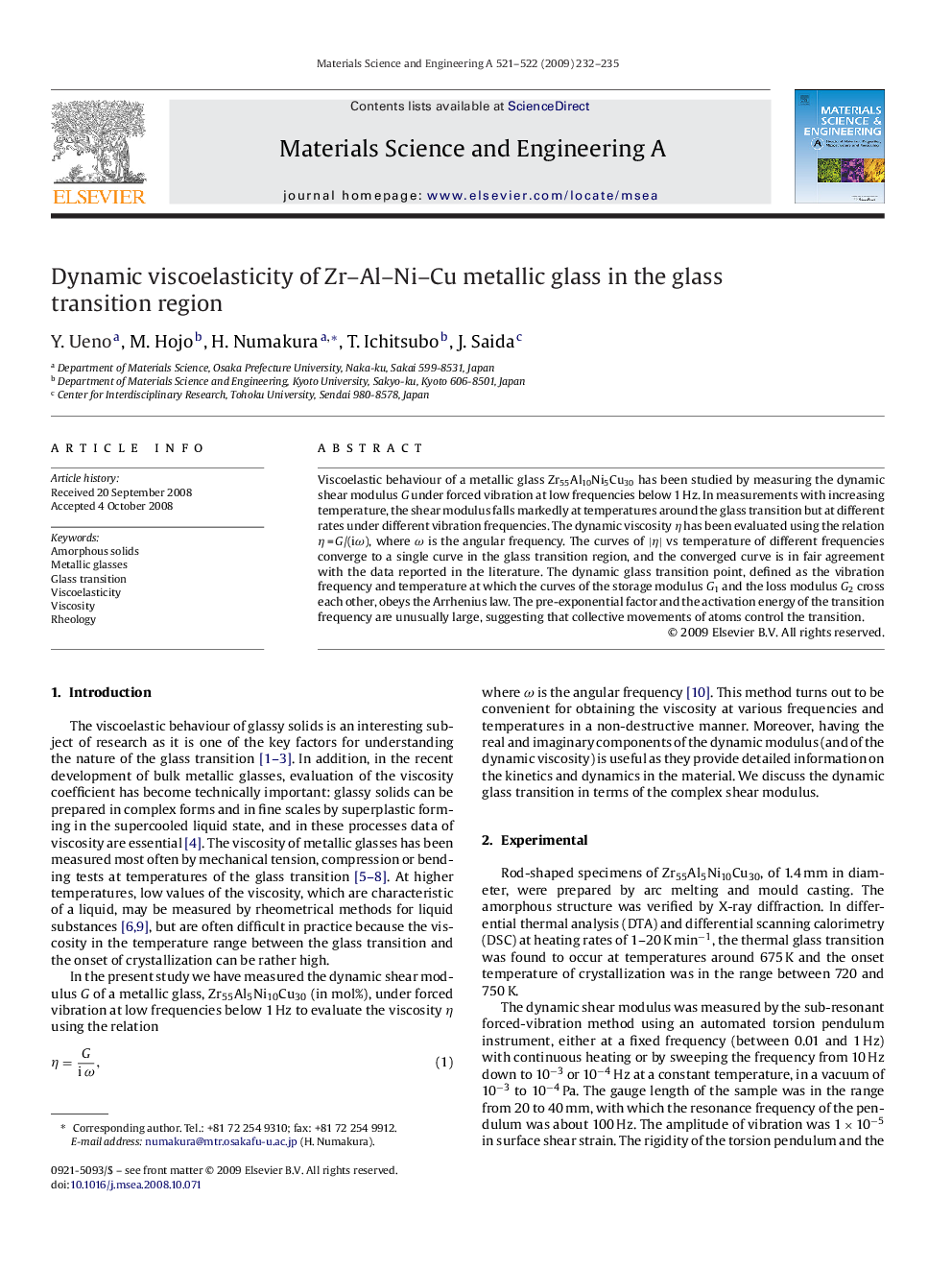| Article ID | Journal | Published Year | Pages | File Type |
|---|---|---|---|---|
| 1580085 | Materials Science and Engineering: A | 2009 | 4 Pages |
Viscoelastic behaviour of a metallic glass Zr55Al10Ni5Cu30 has been studied by measuring the dynamic shear modulus G under forced vibration at low frequencies below 1 Hz. In measurements with increasing temperature, the shear modulus falls markedly at temperatures around the glass transition but at different rates under different vibration frequencies. The dynamic viscosity η has been evaluated using the relation η = G/(iω), where ω is the angular frequency. The curves of |η| vs temperature of different frequencies converge to a single curve in the glass transition region, and the converged curve is in fair agreement with the data reported in the literature. The dynamic glass transition point, defined as the vibration frequency and temperature at which the curves of the storage modulus G1 and the loss modulus G2 cross each other, obeys the Arrhenius law. The pre-exponential factor and the activation energy of the transition frequency are unusually large, suggesting that collective movements of atoms control the transition.
